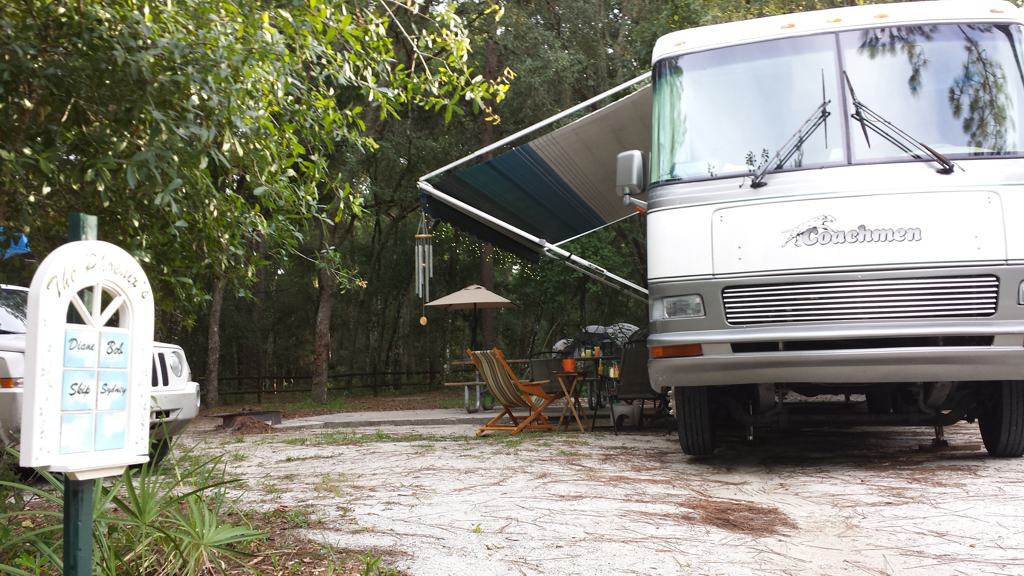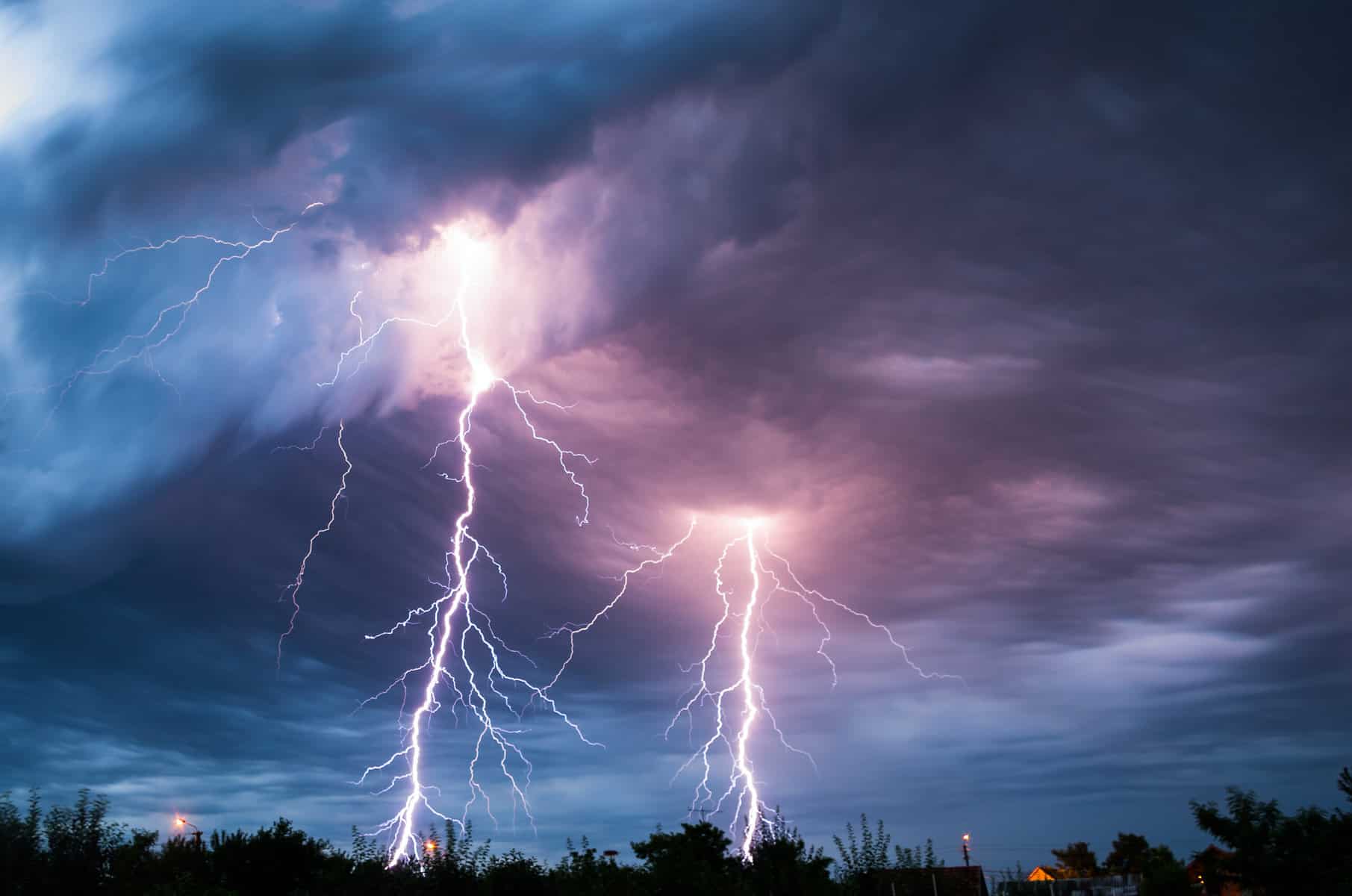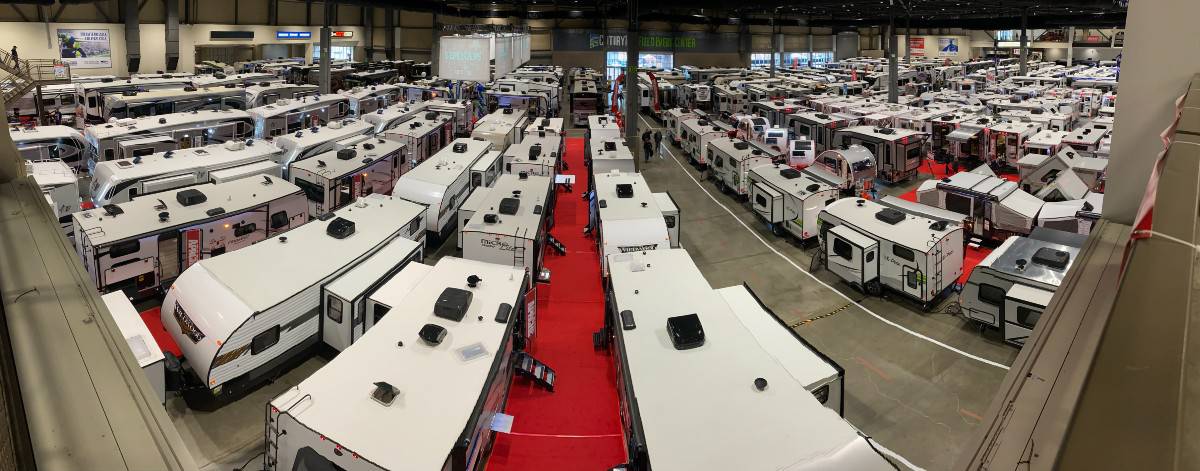Do you follow an RV driving safety checklist before heading out on an RV trip?
If not, rest assured you aren’t the only RVer who doesn’t.
Taking the steps to verify your RV is ready to safely drive to your destination is about as exciting as dumping your holding tanks.
But making sure you, your family and your RV arrive safely at your destination is worth the effort, don’t you agree?
In this RV Driving Safety Checklist you will learn the most critical areas to inspect before heading out on your adventure.
The Ultimate RV Driving Safety Checklist: Top 4 Critical Areas to Inspect.
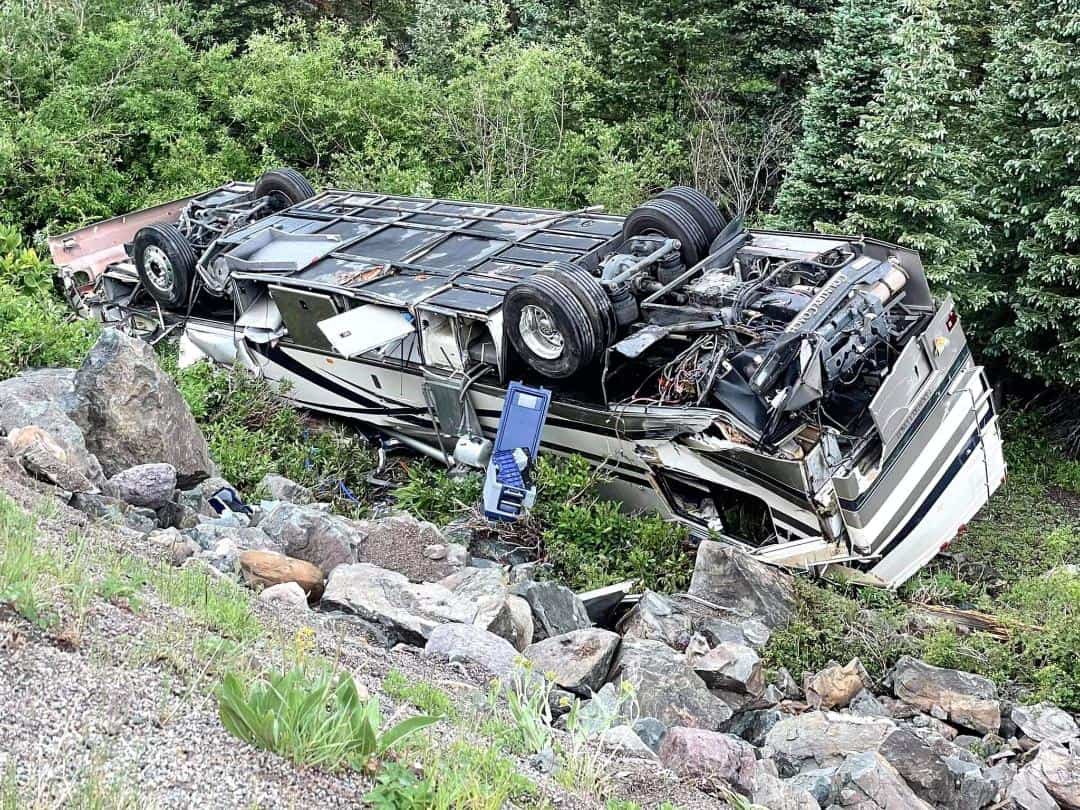
Everyone looks forward to their next RV trip. Sightseeing, hiking, biking, fishing, and time around the campfire are all at the top of most RVer’s activity checklists.
But how many of us take the time to follow an RV driving safety checklist? How often do we make certain our rig is safe for traveling to our campsite, before we pull away? Probably not many of us.
Don’t risk your safety!
Follow this fast and easy RV driving safety checklist to know if your camper is good to go.
1. Check Your RV Running Gear
All RVs have running gear that needs periodic inspecting. Whether you have a Class A, B, C, or truck camper, here are the steps to check yours.
- Tighten wheel lugs to the recommended torque.
- RV tires are in good condition, with no bulges, bumps, or visible tread separation. Remember, losing a wheel or a blown tire is dangerous. It can lead to loss of control, or damage to wheel wellsand the underside of your RV.
- Tires are newer than 5 years old. Any older tires, or those with sidewall cracking should be replaced. Failure to do so can result in RV tire blowouts.
- Your tires are from a reputable brand with good reviews. Sadly, some RV manufactures are known to use inexpensive off-brand tires that are prone to failure (aka “China Bombs).
- All tires are inflated to the recommended pressure. Consider installing a TMPS (Tire Pressure Monitoring System) if you don’t have one. A TPMS allows you to monitor tire pressure remotely. It also alerts the driver to a potential problem while in transit.
More RV Running Gear Safety Tips
- Wheel bearings have been serviced. Skipping regular servicing causes a lack of lubrication. This can lead to loss of a wheel, axle damage or fire. And losing a wheel, especially one that controls steering, can lead to:
- Loss of control of your tow vehicle / motorhome
- A tire and wheel assembly coming up and through a wheel well of your RV.
- Damage to other vehicles and / or people traveling on the same highway.
- Huge delays or the end of your trip. Sourcing parts or finding someone to immediately service your rig is unlikely.
- Brakes are in good condition. Inadequate RV brakes can lead to a runaway vehicle on long downgrades. Malfunctioning RV brakes put you at risk of colliding with other vehicles and pedestrians. Bad brakes on a travel trailer can lead to a tow vehicle jackknife situation. The inability to slow down and corner on wet roads can be deadly.
- Running gear under your RV is ship shape. Look for things in the process of failing like frame members, shocks, exhaust components or a host of other items as summarized here. Nothing can dampen a RV vacation more than something that is ready to fall off from under your RV and does.
What is a Breakaway System?
Ensure the breakaway switch works. Speaking of brakes, those with towable RVs need to check the breakaway switch on their RV. This is an important RV safety driving device. It activates the brakes on your RV if it separates from your tow vehicle because of hitch failure or operator error.
To check that it’s working, pull the pin out of the breakaway switch. Then try to pull your trailer forward. If the pin is working correctly, the tires should not roll. Another item to pay attention to is where you connect the breakaway switch cable to the tow vehicle as outlined below.
Do Camper Trailers Have Brakes?
Most states require that trailers using electric brakes be equipped with a safety circuit called a breakaway system, which is designed to apply the brakes if the trailer disconnects from the tow vehicle. This system consists of a battery mounted on the trailer and a normally closed switch.
The contacts of the switch are separated by a piece of non-conductive plastic to which a lanyard is attached. The other end of the lanyard is attached to the tow vehicle. If the trailer detaches from the tow vehicle, the lanyard pulls the plastic separator removing it from the switch contacts. The switch closes and applies current from the onboard battery to the brakes, stopping the trailer.
Do Camper Trailers Have Brakes?, Camper Report
2. Check RV Lights
Lights and visibility are important for RV driving safety. Be certain to check the following RV lighting mechanisms before leaving home and periodically during your travels.
- Headlights work on the hi and low beams. Also, the lenses are not cracked, covers aren’t fogged and have been cleaned.
- Turn signals and brake lights are operating. Letting other drivers know your intentions when stopping or turning is imperative to RV driving safety. Have somebody stand behind your RV to verify the turn signals and brake lights are working. If you don’t have someone available, you can do it yourself using the key fob light check trick.
- Marker / clearance lights are working. Make sure your rig is highly visible at night.
- Hazard lights function correctly. If you have a towable RV make sure they work on the tow vehicle and RV. These are an RV driving safety item that you will want to be certain are working in the event of a roadside emergency.
- Emergency visibility lights are ready to use. Verify your LED emergency road flares or equivalent are in working order.
Don’t Forget your Windshield and Mirrors
Check windshield and side mirrors. Do they both function? Once you know others can see you via the exterior lights of your RV, make sure you can see them via your windshield and side mirrors. Windshields should be free of cracks and rock chips that impact the driver’s visibility. Clean your windshield before you leave and during refueling stops.
Make sure you have good wiper blades and a full tank of windshield washer fluid before setting out on your trip. Side mirrors need to be properly adjusted and clean for the driver to see what is happening around them at all times.
3. Inspect RV Towing Equipment
If you are hauling a towable RV, dinghy or tow dolly, make sure you have the right gear for the job. Don’t leave without verifying that the gear is working properly and is safe for highway travel. RV towing safety areas of concern include:
Travel Trailer Owners
Inspect the receiver, equalizing hitch, tow ball and coupler. Look for cracks, and double check they are operating. Make sure keeper pins are in place and undamaged, tow ball and couplers are lubed and all bolts involving the hitch components are tight.
Fifth Wheel Owners
Check the hitch latch (the mechanism that locks the kingpin in place). Search for wear, then verify proper operation. Lube as recommended by the manufacturer. Check to make sure the bolts are tight on your fifth wheel hitch and king pin on your fifth wheel.
Motorhome Owners
Towing a dingy via a tow bar or tow dolly: inspect the connection points. Verify they are secure, undamaged and are operating normally.
Why Give Safety Chains a Second Look?
If you are towing a bumper-pull travel trailer, or a dingy behind your motorhome, your safety chains need to be a proper length. Are they safely secured between the tow vehicle and trailer? Here’s why safety chains are an important part of RV driving safety:
- If your trailer separates from the tow vehicle, safety chains keep the trailer from traveling out of control, or possibly colliding with you or others.
- Dragging safety chains can start fires. According to DangerousTrailers.org, in 2019 over 40% of wildfires were caused by sparks from travel trailer owners dragging safety chains. The wheel rims from blown tires also ignite fires when they scrape up the asphalt.
4. Examine Flammable RV Liquids On Board
RV driving safety also means inspecting all gasses and flammable materials you carry in your camper.
- Inspect the LP gas, smoke and carbon dioxide detectors. Make sure they are not past their end of life and are functioning correctly. Not only do these safety features protect the occupants of an RV when stationary, but also will alert the driver and passengers of a motorhome to potential danger when traveling down the highway. Do this before leaving on a trip.
- Perform a Drop Test to confirm the LP gas system is free of leaks. Even if your LP gas detector is not sounding off it is a good idea to do this once a year or so.
How to Safely Haul Flammables with Your RV
- Never store propane or motor fuel in the living portion of the RV. It is never safe to bring a LP tank (cylinder) inside an RV. Always store and secure extra propane tanks and spare motor fuel in a vented exterior compartment or in the open bed of a pick-up.
- Turn off all appliances containing pilot lights and / or DSI (Direct Spark Ignition) before entering a refueling station.
- Carry the appropriate type and quantity of fire extinguisher(s) for your rig. Know their location. Verify each one is charged.
The Last Two RV Driving Safety Checklist Concerns: CCC and Load Balance
There are two more big areas to cover in your RV driving safety checklist. First, know your RV weight! Understand and memorize the CCC (Cargo Carrying Capacity) of your rig. You also want to know the GVWR (Gross Vehicle Weight Rating). Do not exceed either number.
CCC (Cargo Carrying Capacity)
The CCC (Cargo Carrying Capacity) is the difference between the dry weight of the rig and the gross weight. Sadly, some RVs are built with such a low CCC that the unit is “grossed out” (overloaded) with just the passengers and a partial tank of potable water.
Are you in doubt as to what your rig weighs?
Take it to a public scale and pay to have it weighed. You can also head to an Escapees RV Club SmartWeigh station, one of the most accurate ways to know what your RV weighs.
Or, just look for unstaffed weigh stations along major highways and interstates. Oftentimes, those scales are still working. This allows RVers to pull up on the scale. It’s easy to peer through the scale house window to see what each axle or the entire rig weighs. The best part? It’s free.
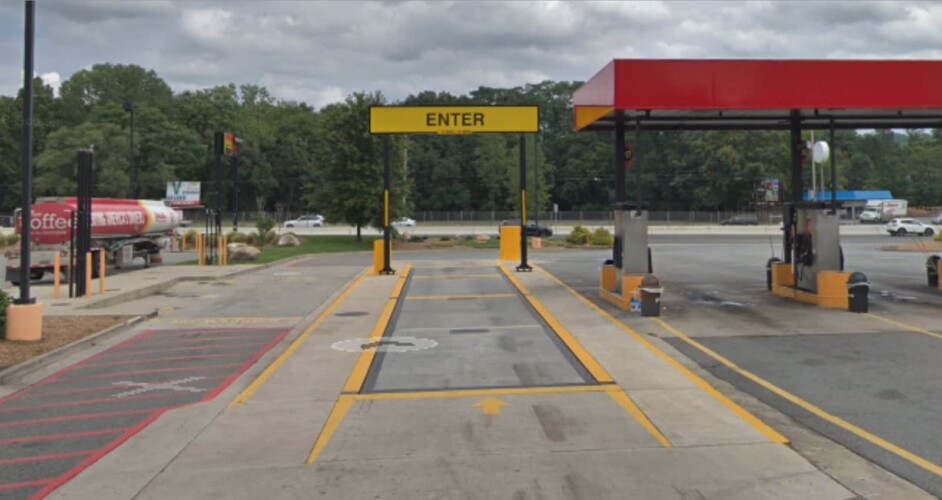
RV Load Balance
Did you balance your load from front to rear and side to side? This is very important regarding RV driving safety.
Learn more about weight distribution and controlling sway here. Don’t miss this very convincing video demonstrating the dangers of improper tongue weight.
By employing the above RV driving safety tips, you minimize the chances of encountering vehicle trouble on the way maximizing your time at camp. Safe travel to all.

